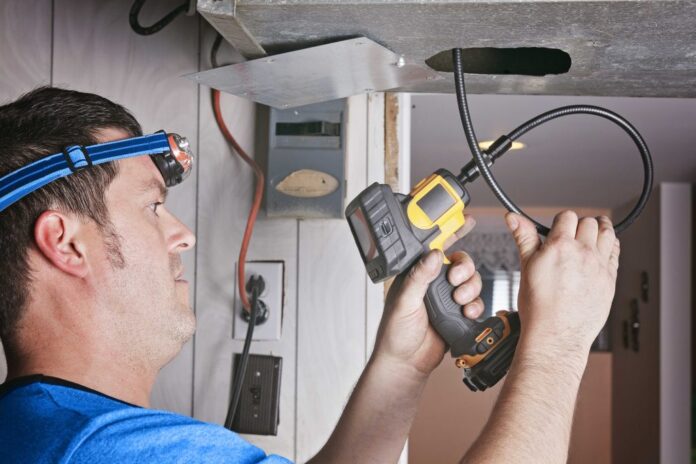There’s no doubt about it – the attic is one of the most essential parts of your home regarding insulation and energy efficiency. Do you want to make sure that your attic is properly insulated? A radiant barrier is a solution to reduce heat transfer into your home. The goal of a radiant barrier is to block the transfer of heat into or out of your attic. Thus, leaving your living space cooler in the summer and warmer in the winter. That’s why Clean Air Doctors: Attic Radiant Barrier Installation has developed a straightforward five-step procedure to assist you in installing a radiant barrier on your attic rafters in no time. Keep reading for more information!
Before starting, ensure you have appropriate safety gear. Ensure you have gloves to prevent splinters and an apron protecting your clothes. Your safety is our top priority, so be sure to take proper precautions!
Declutter Your Attic before installing radiant insulation
Before you get started with the radiant insulation project, you’re going to want to ensure your attic is clean and clutter-free. If you have any stored items in your attic, make sure to move them out of the way. With items out of the way, you will be able to carry out the installation more efficiently, without the risk of damage to insulation barrier foil or injury to yourself.
Measure to determine how much radiant insulation you need
Having cleaned out the attic, the next step to take is to measure your attic space. Use a measuring tape or build a simple ruler that you can use to measure across each rafter. Measuring ensures you purchase the correct amount of insulation for your space. You’ll need first to measure the roofline on one side of the house. You’ll want to place it 3 inches below the roof’s peak and then follow the angle until you’re approximately 3 inches from the floor.
Before climbing into the attic, measure and cut the foil
The best way to prepare the foil before going into the attic is to measure and cut it into manageable pieces; This makes installing the foil easier because you’re not trying to maneuver long foil sheets.
Start by counting the rafters and determining how far apart they are from each other. Generally, rafters are positioned 24″ from one another. So if you have 12 rafters, then the total length will be 24″ x12= 288″. It’s prudent to add an extra foot to this number to avoid running short; 288 “+1’=289”.
Next, measure out the total length and cut a piece of foil that length. Ensure that the edges are square after you cut because the foil is relatively thin and cuts quickly. Once you have enough pieces cut, fold them up, and bring them into the attic.
Staple the radiant barrier foil
When stapling the radiant barrier foil, you want to do so securely to prevent it from sagging or becoming loose over time. Make sure you staple the foil on each rafter along with the entire attic space while leaving gaps at the bottom for proper ventilation.
Once you’ve completed the first run, go back and attach the next one, overlapping the first by around an inch. Place one piece on top of the other and attach them. Continue in this manner until you reach the rooftop. Leave a small opening at the top for venting purposes.
Gable walls should be covered.
The final step of the foam roofline installation is to cover the gable walls inside the attic. Gable walls are panels on either side of the “peak” of the roof. Gable walls receive sunlight which it disperses into the attic space that will then conduct down into the house. Try to cover most of the gable wall with foil. You will need to cut around any grills or vents in your way.
When installing a radiant barrier in your attic, following these five simple steps is essential to get the maximum benefit from your effort. You can ensure the process goes smoothly by decluttering your attic before installation and measuring how much insulation you need. Be sure to staple the foil securely in place and cover any gable walls with it for maximum effect. You will save money on heating costs when you use radiant insulation instead of traditional roofing supplies, which cause air conditioning units to work harder than they need to.











